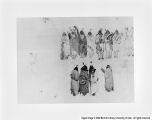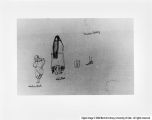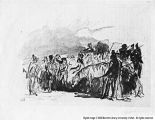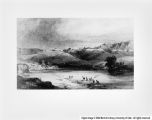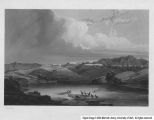| OCR Text |
Show 100 maximum number of Bodmer's illustrations; the publishers Maximilian approached, however, were wary of taking on so ambitious a publication. Bodmer, schooled in the traditions of European travelbook illustration, understood the artistic and technical processes for producing such illustrations, but was unprepared for the long, frustrating responsibility of publishing the eighty-one prints that accompanied Travels. Understanding the process of bringing Travels through complete production for three separate editions-German, English, and French-hinges upon examination of the format Maximilian chose for the German edition of Travels. Maximilian's initial choice of format for his book had far-reaching implications for both science and art. The elaborate travelbook format, which Maximilian had intended from the beginning and was determined to realize, would take almost ten years to complete, straining Maximilian's financial resources to the limit. Ultimately, however, he would create not only a unique scientific documentation of a vanishing culture, but also one of the last great aquatint travelbooks. Travels' greatness rests upon Bodmer's illustrations; the format allowed the fullest use of these remarkable documents. After a prolonged and unsuccessful search for a publisher willing to accept financial responsibility for the project, Maximilian finally turned to Jacob Holscher, the Coblenz publisher who had already handled much of Bodmer's early work. Holschertook over responsibility for promoting and printing the German edition and issued a prospectus to subscribers in the autumn of 1837. The German edition of Travels was sold exclusively through subscriptions-the accepted method of publishing the more expensive travelbooks, because it reduced the financial risk of such ventures. The |
















































